Author Archives: Ajitesh Kumar
Online AI News from Top Global Universities – List

In this post, you will get an access to a list of web pages representing latest news related to artificial intelligence from top universities across the globe. This page will be updated from time-to-time for including new pages from different universities across the globe. These URLs will be very useful for those machine learning / data science enthusiasts who want to keep tab on current news and events in the field of artificial intelligence. MIT Stanford Stanford university – Human-centered AI (HAI) Stanford university – Center for AI in medicine and imaging Stanford AI research and ideas Harvard university JHU Malone center for Engg. in healthcare Yale university Princeton university …
MOSAIKS for creating Climate Change Models
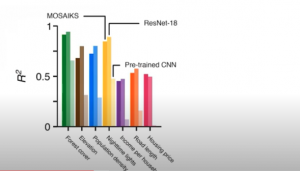
In this post, you will learn about the framework, MOSAIKS (Multi-Task Observation using Satellite Imagery & Kitchen Sinks) which can be used to create machine learning linear regression models for climate change. Here is the list of few prediction use cases which has already been tested with MOSAIKS and found to have high model performance: Forest cover Elevation Population density Nighttime lights Income Road length Housing price Crop yields Poverty mapping What is MOSAIKS? MOSAIKS provides a set of features created from Satellite imagery dataset. We are talking about 90TB of data gathered per day from 700+ satellites. These features can be combined with machine learning algorithms to address global …
Machine Learning for predicting Ice Shelves Vulnerability
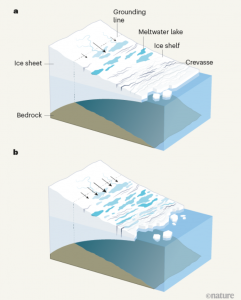
In this post, you will learn about usage of machine learning for predicting ice shelves vulnerability. Before getting into the details, lets understand what is ice shelves vulnerability and how it is impacting global warming / climate change. What are ice shelves? Ice shelves are permanent floating sheets of ice that connect to a landmass. Most of the world’s ice shelves hug the coast of Antarctica. Ice from enormous ice sheets slowly oozes into the sea through glaciers and ice streams. If the ocean is cold enough, that newly arrived ice doesn’t melt right away. Instead it may float on the surface and grow larger as glacial ice behind it continues to flow into the …
Top Data Sources for Climate Change Research

In this post, you will get to learn about top data sources online from where you can learn and get data for doing research on climate change. Vitalflux is committing itself to AI and climate change research for next 15 years. You will get to learn about climate change and how data science / machine learning can be leveraged to tackle climate change in time to come. Without further ado, lets list down the data sources related to climate change research: United Kingdom’s Met Office Hadley Centre: Researchers at the Met Office Hadley Centre produce and maintain a range of gridded datasets of meteorological variables for use in climate monitoring and climate …
Python Scraper for GoogleNews, Twitter, Reddit & Arxiv

In this post, you will get the Python code for scraping latest and greatest news about any topics from Google News, Twitter, Reddit and Arxiv. This could prove to be very useful for data scientist, machine learning enthusiats to keep track of latest and greatest happening in the field of artificial intelligence. If you are doing some research work, these pieces of code would prove to be very handy to quickly access the information. The code in this post has been worked out in Google Colab notebook. First and foremost, import the necessary Python libraries such as the following for GoogleNews, Twitter and Arxiv. Python Code for mining GoogleNews Here …
Reddit Scraper Code using Python & Reddit API

In this post, you will get Python code sample using which you can search Reddit for specific subreddit posts including hot posts. Reddit API is used in the Python code. This code will be helpful if you quickly want to scrape Reddit for popular posts in the field of machine learning (subreddit – r/machinelearning), data science (subreddit – r/datascience), deep learning (subreddit – r/deeplearning) etc. There will be two steps to be followed to scrape Reddit for popular posts in any specific subreddits. Python code for authentication and authorization Python code for retrieving the popular posts Check the Reddit API documentation page to learn about Reddit APIs. Python code for …
Mining Twitter Data – Python Code Example
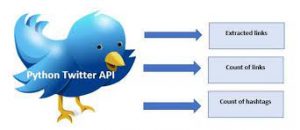
In this post, you will learn about how to get started with mining Twitter data. This will be very helpful if you would like to build machine learning models based on NLP techniques. The Python source code used in this post is worked out using Jupyter notebook. The following are key aspects of getting started with Python Twitter APIs. Set up Twitter dev app and Python Twitter package Establish connection with Twitter Twitter API example – location-based trends, user timeline, etc Search twitter by hashtags Setup Twitter Dev App & Python Twitter Package In this section, you will learn about the following two key aspects before you get started with …
Spend Analytics – 5 Ws of Spend Analysis
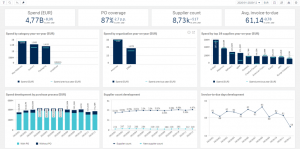
In this post, you will learn about 5 Ws of spend analytics. In case you are a procurement professional looking to understand use cases related to spend analytics, you may find this post to be very useful. In simple words, spend analytics is about extracting insights from spend in different procurement categories. What are we spending on? First and foremost, it is important to get visibility on what items are we spending on. This can be achieved using a dashboard. This form of analytics is also called descriptive analytics. Analyzing item spends can be termed as Item spend analytics. The items can be related to direct or indirect procurement. Indirect …
Python Scraper Code to Search Arxiv Latest Papers

In this post, you will learn about Python source code related to search Arxiv for relevant and latest machine learning and data science research papers. If you are looking for a faster way to research on Arxiv papers without really going to the Arxiv website, you may want to get this piece of code in your kitty. You can further automate the Arxiv search to get notified based on some logic. Without further ado, let’s get started. Step 1: Install Python Arxiv Library As a first step, install the Python Arxiv library using the code such as below in your Jupyter notebook or Google colab instance: Step 2: Execute the …
Google News Search Python API Example

In this post, you will learn about how to use GoogleNews search Python library to get or retrieve or scrape news from Google News for last N number of days. This would be very helpful for someone wanting to track new work / projects in relation to machine learning, data science, deep learning or any field including sports, politics etc. Without further ado, lets jump in right away. You can log into Google colab and practise the code. Step 1: First and foremost, lets install GoogleNews python library. Step 2: Instantiate GoogleNews object. One can pass the language and period to instantiate the object. The parameter, period, represents the news …
Python – How to Create Dictionary using Pandas Series
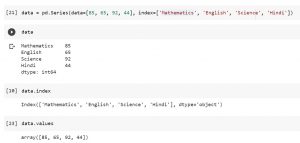
In this post, you will learn about one of the important Pandas fundamental data structure namely Series and how it can be used as a dictionary. It will be useful for beginner data scientist to understand the concept of Pandas Series object. A dictionary is a structure that maps arbitrary keys to a set of arbitrary values. Pandas Series is a one-dimensional array of indexed data. It can be created using a list or an array. Pandas Series can be thought of as a special case of Python dictionary. It is a structure which maps typed keys to a set of typed values. Here are the three different ways in …
Free Online Books – Machine Learning with Python
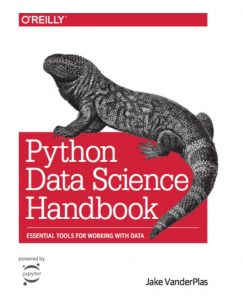
This post lists down free online books for machine learning with Python. These books covers topiccs related to machine learning, deep learning, and NLP. This post will be updated from time to time as I discover more books. Here are the titles of these books: Python data science handbook Building machine learning systems with Python Deep learning with Python Natural language processing with Python Think Bayes Scikit-learn tutorial – statistical learning for scientific data processing Python Data Science Handbook Covers topics such as some of the following: Introduction to Numpy Data manipulation with Pandas Visualization with Matplotlib Machine learning topics (Linear regression, SVM, random forest, principal component analysis, K-means clustering, Gaussian …
Great Site for Matrix Multiplication Demo
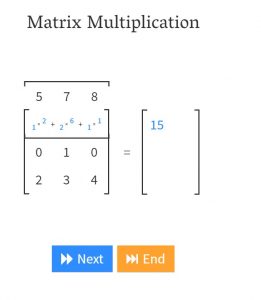
Here is a great website for the matrix multiplication demo. If you are a beginner data scientist, you will love this. http://matrixmultiplication.xyz/ Here is how the website looks like. It has just one page. It actually shows how multiplication happens given the different dimensions of the matrix. Here are few other websites for understanding matrix multiplication concepts: https://www.mathsisfun.com/algebra/matrix-multiplying.html Khan Academy – Matrix multiplication
Different types of Machine Learning Problems
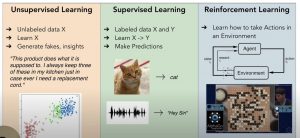
This post describes the most popular types of machine learning problems using multiple different images/pictures. The following represent various different types of machine learning problems: Supervised learning Unsupervised learning Reinforcement learning Transfer learning Imitation learning Meta-learning In this post, the image shows supervised, unsupervised, and reinforcement learning. You may want to check the explanation on this Youtube lecture video. Unsupervised Learning Problems In unsupervised learning problems, the learning algorithm learns about the structure of data from the given data set and generates fakes or insights. In the above diagram, you may see that what is given is the unlabeled dataset X. The unsupervised learning algorithm learns the structure of data …
Top 10+ Youtube AI / Machine Learning Courses

In this post, you get access to top Youtube free AI/machine learning courses. The courses are suitable for data scientists at all levels and cover the following areas of machine learning: Machine learning Deep learning Natural language processing (NLP) Reinforcement learning Here are the details of the free machine learning / deep learning Youtube courses. S.No Title Description Type 1 CS229: Machine Learning (Stanford) Machine learning lectures by Andrew NG; In case you are a beginner, these lectures are highly recommended Machine learning 2 Applied machine learning (Cornell Tech CS 5787) Covers all of the most important ML algorithms and how to apply them in practice. Includes 3 full lectures …
Scikit-learn vs Tensorflow – When to use What?
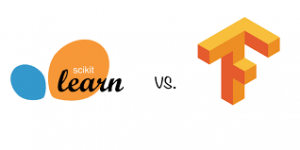
In this post, you will learn about when to use Scikit-learn vs Tensorflow. For data scientists/machine learning enthusiasts, it is very important to understand the difference such that they could use these libraries appropriately while working on different business use cases. When to use Scikit-learn? Scikit-learn is a great entry point for beginners data scientists. It provides an efficient implementation of many machine learning algorithms. In addition, it is very simple and easy to use. You can get started with Scikit-learn in a very easy manner by using Jupyter notebook. Scikit-learn can be used to solve different kinds of machine learning problems including some of the following: Classification (SVM, nearest neighbors, random …
I found it very helpful. However the differences are not too understandable for me